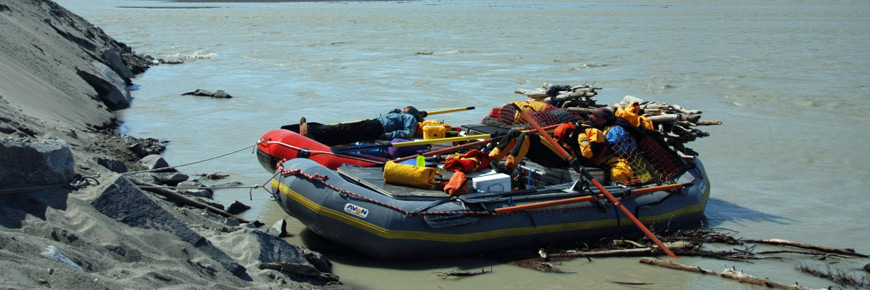
Equipment
Kluane National Park and Reserve
On the river
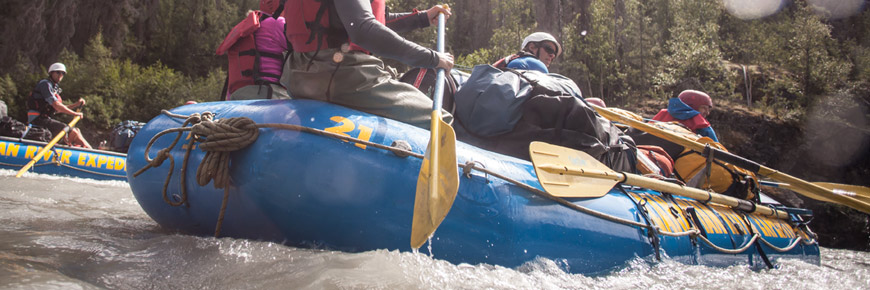
Boats
A minimum of two boats per party is recommended for safety.
- Four-metre or larger rafts in good operating condition are recommended
- Rigid kayaks and covered whitewater canoes with floatation are suitable only for paddlers experienced with Class III and IV rapids
- Folding kayaks and open canoes are not recommended.
Emergency equipment
All rafts with fixed floors must carry a bailing bucket and should pack emergency rescue gear in case of an accident, including:
- Throw bags
- Rescue rope and pulleys
- A comprehensive first aid kit
- Repair kit
- Spare paddles and oars
- Extra food for unexpected delays
Emergency equipment is only useful if easily accessible, you know how to use it and have practiced with it.
Personal gear
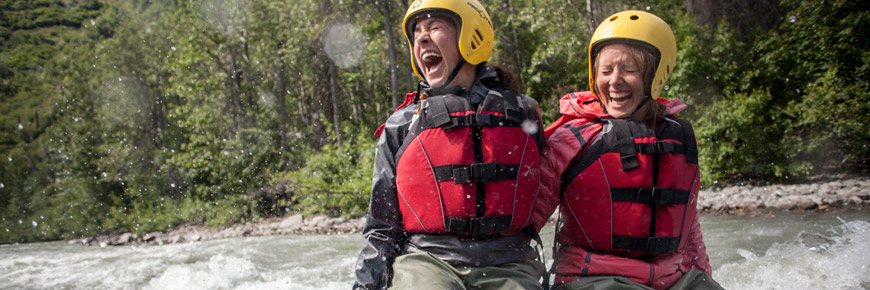
Personal floatation devices (PFD's)
Ministry of Transport regulations require that one approved PFD must be worn by each traveler. A Type III or Type V PFD is recommended, as they offer a greater amount of floatation.
Thermal protection
The air and water temperatures are cold, particularly when it's windy. Warm clothing that retains heat when wet is recommended.
- Synthetic fleece and wool layers are preferred to cotton
- Wearing dry suits with warm layers underneath is strongly recommended when negotiating rapids
Helmets
Whitewater helmets are recommended for all river travelers, especially when negotiating rapids.
In camp
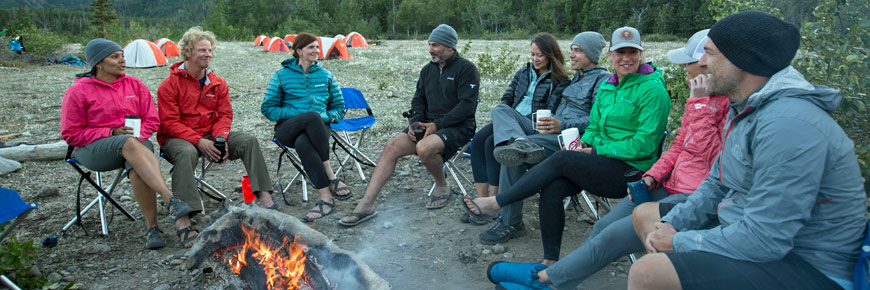
Food storage
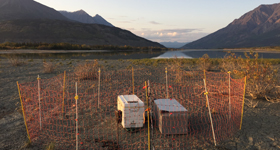
It is mandatory to ensure that human food and garbage is secured or contained in such a manner that it is inaccessible to bears
The use of IGBC approved bear resistant containers (coolers, canisters, raft boxes) and/or IGBC certified portable electric fences is required to help prevent bears from accessing human food.
Approval process for the use of portable electric fences
If you plan to use an electric fence to secure your attractants, please let our staff know when requesting your put-in date. Make sure the exact model you are using is on the IGBC certified products list (note: some models have similar names but not all are certified). When finalizing your registration you will be asked for the IGBC Certification number of your fence.
Ensure that you can set up your fence so it meets the requirements for proper use. Trip leaders will have a mandatory meeting with the Kluane Duty Officer, where you will be expected to set up and demonstrate proper use of your electric fence prior to being issued your wilderness permit. You must have a voltmeter and demonstrate using it to test your fence.
| System component | Requirement |
|---|---|
| Controller output | 0.11 Joules (minimum) |
| Tested voltage (every hot line) | 5000 Volts (minimum) |
| Strands of wire (per hot line) | 7 (minimum) |
| Ground rod length | 0.31 m (minimum) |
| Distance between lines | 0.28 m (maximum) |
| Fence height | 0.8 m |
| Distance from fence to attractants inside | 0.45 m (minimum) |
Fire pan
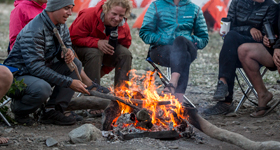
Fire pans are required for campfires. Camp stoves are recommended, since driftwood and deadwood are limited and difficult to obtain.
Human waste disposal system
All human waste must be packed out of the Alsek Valley. Human waste disposal systems are available for rent from commercial suppliers. Please be sure to arrive at the park with an appropriate waste disposal system. A dump station is available at Dry Bay.
Emergency communication
Satellite phones are recommended in case of the need for emergency contact. Other satellite GPS messenger devices, such as a SPOT® or inReach®, are also effective. Cell phones do not work on the Alsek River.
There is no single emergency contact number that is good for the whole river. It is important to know which number to call in the event of an emergency.
Kluane National Park and Reserve
24 hr emergency dispatch: 1-780-852-3100
Tatshenshini-Alsek Park and Glacier Bay National Park & Preserve
24 hr emergency dispatch: 1-907-697- 2651
- Date modified :